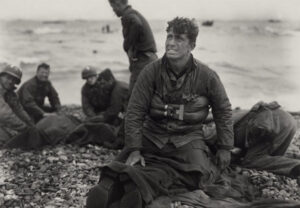@media (max-width:576px) .read-more-content height: 620em;
Any martial arts system will have a variety of combative blocks and parries. There are many variations to every block or parry. They all have the same purpose: to keep you from being punched, stabbed or kicked in your face. It is important to focus on the correct blocking techniques when preparing for self-defense.
Blocking is the key to a successful defense
There are dozens of different types of blocks that you can master. There are high blocks and down blocks as well as cross blocks, circular, elbow, double-handed, and cross blocks.
This article will discuss the basic blocks and explain how, when, and why they work. We will also show you how to implement them at a fundamentally level.
Movement is Life
When I see an instructor teach a student to block, my biggest pet peeve is when they have the student stand still and in a static position. This is how most white belt beginners learn. But the habit of standing still needs to be broken quickly.
You must practice “getting away from the X” by moving, ducking/slipping in the block, moving to the side or moving away.
Do not stand with your face hidden behind your arm and expect your arm to do the work. If your block is weak or misses, you should move your body to avoid/counter the attack.
A Basic High Block
High blocks are a good basic block. It can be used straight forward or angled. This fundamental block is often taught incorrectly in many classes. Students are swinging their arms straight upwards and almost hitting themselves on the face. This version does not work.
Remember the ancient battles where combatants used weapons and shields. Imagine a shield rising upwards towards an approaching attack. This is the foundation of a high-block.
The outer edge of your forearm acts as a shield, directing energy upwards and towards the attacker. You can throw a high-block to counter an overhead hook or to overcome a punch coming from above.
Basic High Block Demonstration
Frank shows a relaxed fighting posture.
His right hand starts to move up in front of him.
Then his hand starts to shoot forward and it raises. This turns his forearm inward.
Now, his hand is at a slight angle with the block. Like half the roof of a house. A roof block allows an attacker to enter and, hopefully, angle and slide the arm away from the face. Imagine heavy snow sliding down a roof’s side, so that the structure of the house doesn’t have to bear the weight of the snow.
Blocking vs. Parrying
A block is typically force-on-force–attacking the attack with the intent to stop the attacking strike. A parry is a sidestep that involves pushing or slapping away an attack. Many combative systems use a parry as well as a counterpunch, including boxing.
In this series Chris shows a parry to a right punch, and then counters it with his own. Chris’s Coppershed copper defense knuckle is a nasty surprise for Jose.
Jose, the potential attacker, tries to corner Chris behind a wall. Both men are on guard.
Chris successfully knocks aside his attacker’s punch, creating an opening for him to deliver his own straight right punch. Complete with a copper-colored knuckle.
Jose tries to punch Chris in the face with a right hand. Chris takes a step at an angle to the outside of Jose’s strike. He then delivers a parry in order to counter the strike.
Close the Gap & Counterstrike
Sometimes blocks are used solely defensively. Sometimes, however, they are used as a way to absorb shocks so that a fighter can close a distance and deliver their own strike.
Defensively, I always suggest creating enough distance for you to escape safely. Sometimes, however, escaping is not possible. In those situations, the best defense will be an overwhelming offense.
Frank and Jose square off. Jose knows that verbal Judo will not de-escalate the situation. He is aware of the physical threat Frank poses and wants to be prepared to counter it.
Frank decides that he will throw a looping, left-overhand punch at the side of Jose’s head. Jose counters Frank’s punch with a modified high-block.
Jose throws his own solid left.
Dealing with an Edged Weapon
The purpose of a block, in the end, is to stop an attack or shut it down. Sometimes, the level of force can go beyond empty-handed kicks and strikes. It is possible that an edge weapon will be used in the fight.
Some instructors will tell students to run if they see a knife. What if you are unable to run? What if your attacker is faster? Or is your attacker a faster runner than yourself? Now you’ll have to fight tired.
There is no 60-second guide to learning how you can defend yourself against a knife. The photos below are just an example of how you can use a knife to block, counter and hopefully disarm, or disable, an attacking limb for long enough to get to safety.
Jose draws a blade and squares off with Frank. Jose begins to approach and starts to assess him. Frank prepares to attack by drawing his own knife.
Jose attempts to slash Frank with a knife in the right hand. Frank moves to the right (V Step Angle 1) and delivers a block against Jose’s attacking forearm.
Thank You 2024 Blade Show Fight Club
I would like to thank my friends, fellow knife designers and martial artists, who took the time to take photos for this article during the 2024 Atlanta Blade Show.
Thank you very much to Ryan Forbes, Copper Shed Metal Works, for the Copper Knuckle that was used in this article. Last but not least, I would like to thank Chris Cabin of Hog Mountain Tool and Tactical who made the CUMA Beast training knives used in this article.
Visit CopperShed.com or TakKnife.com for more information.
(From left to right) Frank Delo. Ryan Forbes. Jose Legaspi. Chris Cabin.
You didn’t find the information you were looking for
Search Engine
Keep ReadingThe article Basic Combatives: Successful Street Defense with Proper Blocking appeared first on Athlon Outdoors.

















